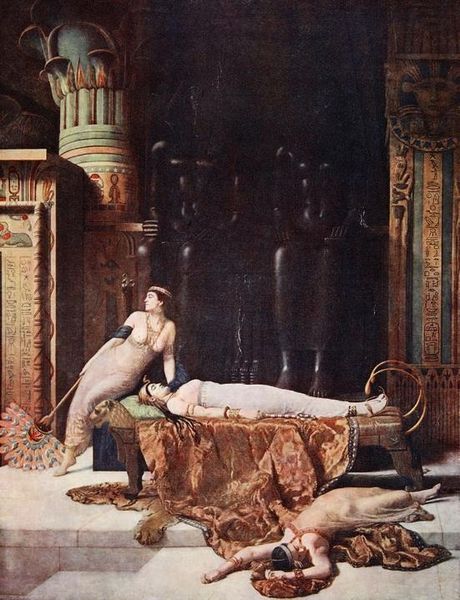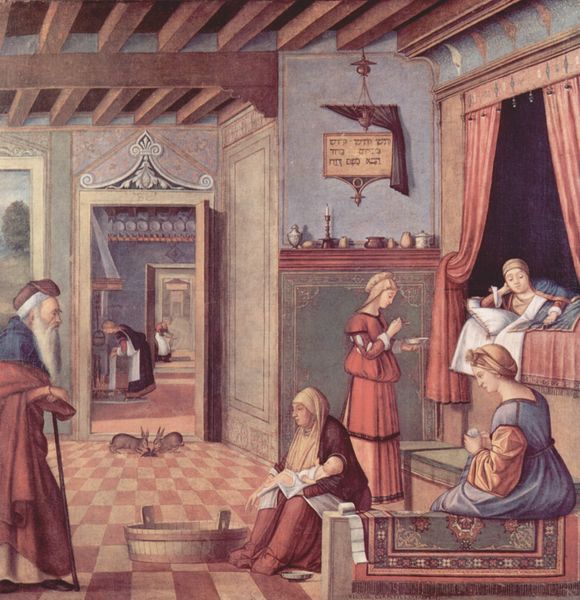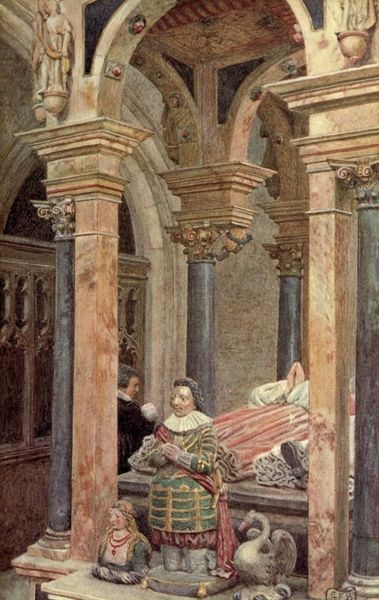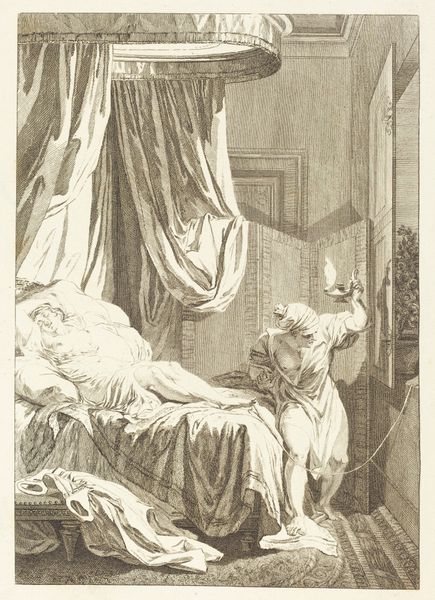
tempera, painting, architecture
#
portrait
#
narrative-art
#
tempera
#
painting
#
christianity
#
italian-renaissance
#
architecture
#
angel
Dimensions: 273 x 267 cm
Copyright: Public domain
Curator: Vittore Carpaccio, a name synonymous with the Venetian Renaissance, completed "Dream of St. Ursula" in 1495 using tempera on wood. This piece, currently housed in the Galleria dell'Accademia in Venice, is one of a series depicting the life of Saint Ursula. Editor: It feels incredibly intimate, doesn’t it? There’s a certain stillness—an almost hushed reverence—conveyed by the cool colors and geometric forms. It's as if we're intruding on a sacred moment. Curator: Notice the artist’s meticulous attention to spatial organization and perspective. The bed acts as a horizontal anchor, juxtaposed with the verticality of the architecture—the windows, the columns. These carefully constructed lines emphasize the interplay of interior and exterior space, giving us a sense of depth. Editor: That careful geometry can also feel oppressive. It makes me consider Ursula's constrained role as a woman within religious institutions. The architecture here imprisons as much as it elevates, representing a world circumscribed by patriarchal forces. Curator: While that may be, structurally, the light is expertly rendered. Consider how it pools on the right side of the composition, drawing our eye to the angel and her ethereal presence. This celestial intrusion doesn't disrupt the space but integrates seamlessly within it. Editor: Yes, but think about who gets to experience these visitations and visions. Throughout history, such "divine" encounters are often depicted as happening to young, unmarried, and often obedient women. Does this reflect true holiness or enforced societal expectations? The passive St. Ursula lying asleep there… is it peace, or a surrender to fate that she has not decided? Curator: Perhaps. But structurally speaking, by using color to link the figures of the angel and the dreaming saint, the artist forges a symbolic chain between earthly and divine realms that is independent of gender constructs. Editor: Ultimately, the visual power resides in how this image complicates our reading. It leaves one contemplating questions of faith and authority without offering any easy answers. It is a snapshot into a particular woman’s dilemma – even now, centuries on. Curator: A very good observation. This focused encounter truly blends formal elegance with deep, perhaps irresolvable, complexity.
Comments
No comments
Be the first to comment and join the conversation on the ultimate creative platform.













